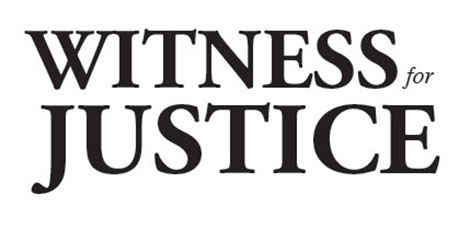Commentary: Where Is the Hope?
 “Hope is definitely not the same thing as optimism. It is not the conviction that something will turn out well, but the certainty that something makes sense, regardless of how it turns out.” —Vaclav Havel
“Hope is definitely not the same thing as optimism. It is not the conviction that something will turn out well, but the certainty that something makes sense, regardless of how it turns out.” —Vaclav Havel
As I write, residents of Texas are beginning the long process of recovery from Hurricane Harvey. Other storms are gaining strength in both the Atlantic and the Pacific oceans. The summer monsoon season in India, Nepal, and Bangladesh has left over 1,200 people dead; it has also ruined crops and hundreds of thousands of homes and put at least one third of Bangladesh under water.
Meanwhile, 70 wildfires burning in the western United States have charred 10,600 acres, sent thousands of people fleeing from their homes, and raised smoke and particulate matter to hazardous levels. The fire season, one of the worst will continue until cooler weather and rains come in the fall.
Climate models predict that the frequency and intensity of these extreme events will continue to rise. At the same time, the Environmental Protection Agency is being gutted, and budget cuts are proposed for the Federal Emergency Management Agency.
Where is the hope?
Some see these tragedies unfolding and feel too overwhelmed and powerless to do anything. They become paralyzed by despair and hopelessness. Or they choose to live in denial.
As people of faith, we in the United Church of Christ can continue to live in hope. Not hope for a happy-ever-after ending to climate change. But hope that draws on God.
Dr. Kate Davies suggests that we differentiate between extrinsic and intrinsic hope. Extrinsic hope expects specific outcomes and is disappointed when they do not occur. Extrinsic hope does not accept the current reality, lives in the future, and is based on fear.
On the other hand, intrinsic hope let’s go of specific outcomes and is open to possibilities. It accepts life as it is, warts and all, and aspires to what can be even better. It lives in the present moment and is motivated by love. Intrinsic hope calls us to take action.
So what actions can we take in the face of such daunting environmental challenges?
Davies suggests that we practice prayer, meditation, and silence—that is, practice being present. She also suggests we practice gratitude, love the world, and accept it as it is.
Here are other steps we can take:
- Educate ourselves and our communities about environmental challenges.
- Link with networks involved in this work, e.g., the UCC’s newsletter The Pollinator or environmental justice workshops.
- Engage our elected officials on environmental issues and advocate for positive changes.
- Reduce our own carbon footprints.
- Contribute to disaster relief funds, including the UCC’s efforts.
When we pass the collection plate in church, I cannot put in enough money to sustain the church’s missions and expenses. But if we all contribute what we can, the combined funds will sustain the church. It is the same with environmental challenges. If we all do all that we can, we will make a difference. We cannot fix these challenges alone. But we are part of something bigger, so we do our part and give the rest over to God.
Meighan Pritchard is Environmental Justice Curriculum Trainer of the United Church of Christ.
View this and other columns on the UCC’s Witness for Justice page.
Donate to support Witness for Justice through the Neighbors in Need offering.
Click here to download the bulletin insert.
Related News
Persona non Grata
The first time I heard the term persona non grata I was a child living in Jamaica, where I was...
Read More‘Natural Spirituali-teas’ vlog from UCC General Minister & President explores spirituality
It's time to spill the tea--the Rev. Karen Georgia Thompson, United Church of Christ General...
Read MoreResolutions for General Synod 35 span global contexts, holistic health, Conference change
The final proposed resolutions for General Synod 35 are now available for review. Eight...
Read More


